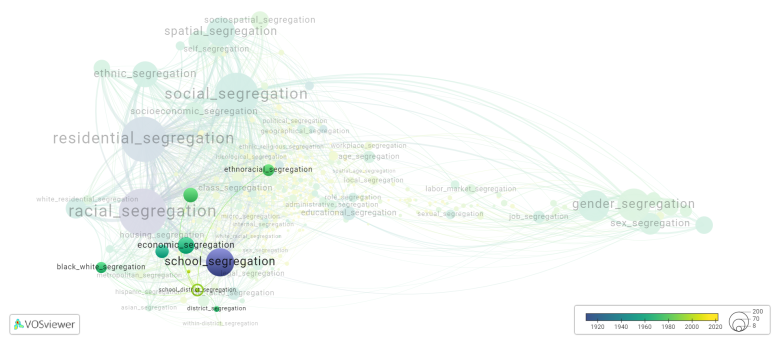School district segregation
Date and country of first publication[1]
2003
United States
Definition
School district segregation refers to the separation or division of students based on race, ethnicity, or socioeconomic status within a school district. This can occur through various means, such as the creation of racially or economically homogenous schools, unequal resource allocation, or the drawing of district boundaries that concentrate certain groups in specific areas.
Historically, school district segregation in the United States has been a result of both de jure segregation, which was mandated by law, and de facto segregation, which occurred due to social and economic factors. During the era of racial segregation in the mid-20th century, many school districts implemented policies that enforced separate and unequal educational opportunities for African American and white students. This changed with the landmark 1954 Supreme Court case Brown v. Board of Education, which declared racial segregation in public schools unconstitutional and mandated the desegregation of schools.
However, despite legal efforts to combat segregation, de facto segregation remains a significant issue in many school districts. Factors such as residential segregation, income disparities, and unequal funding contribute to the perpetuation of segregation. As a result, students from marginalized communities often have fewer resources and face educational inequities compared to their peers in more affluent and predominantly white school districts.
Efforts to address school district segregation involve various strategies, such as implementing policies to promote diversity and equal opportunity, revising district boundaries, and redistributing resources. These efforts aim to ensure that all students, regardless of their race or socioeconomic background, have access to high-quality education.
See also
Related segregation forms
School district segregation is frequently discussed in the literature with the following segregation forms:
income segregation, school segregation, ethnoracial segregation, neighborhood segregation, racial segregation, economic segregation, black white segregation, residential segregation, socioeconomic segregation, hispanic white segregation

This visualization is based on the study The Multidisciplinary Landscape of Segregation Research.
For the complete network of interrelated segregation forms, please refer to:
References
Notes
- ↑ Date and country of first publication as informed by the Scopus database (December 2023).
School district segregation appears in the following literature
Eitle D., McNulty Eitle T. (2003). Segregation and School Violence. Social Forces, 82(2), 589-615. Oxford University Press.https://doi.org/10.1353/sof.2004.0007
Richards M.P. (2014). The Gerrymandering of School Attendance Zones and the Segregation of Public Schools: A Geospatial Analysis. American Educational Research Journal, 51(6), 1119-1157. SAGE Publications Inc..https://doi.org/10.3102/0002831214553652
Owens A., Reardon S.F., Jencks C. (2016). Income Segregation Between Schools and School Districts. American Educational Research Journal, 53(4), 1159-1197. SAGE Publications Inc..https://doi.org/10.3102/0002831216652722
Owens A. (2016). Inequality in Children’s Contexts: Income Segregation of Households with and without Children. American Sociological Review, 81(3), 549-574. American Sociological Association.https://doi.org/10.1177/0003122416642430
Logan J.R., Zhang W., Oakley D. (2017). Court orders, white flight, and school district segregation, 1970 2010. Social Forces, 95(3), 1049-1075. Oxford University Press.https://doi.org/10.1093/sf/sow104
Richards M.P., Stroub K.J. (202). Metropolitan public school district segregation by race and income, 2000 2011. Teachers College Record, 122(5), 21-41. Teachers College, Columbia University.https://doi.org/
